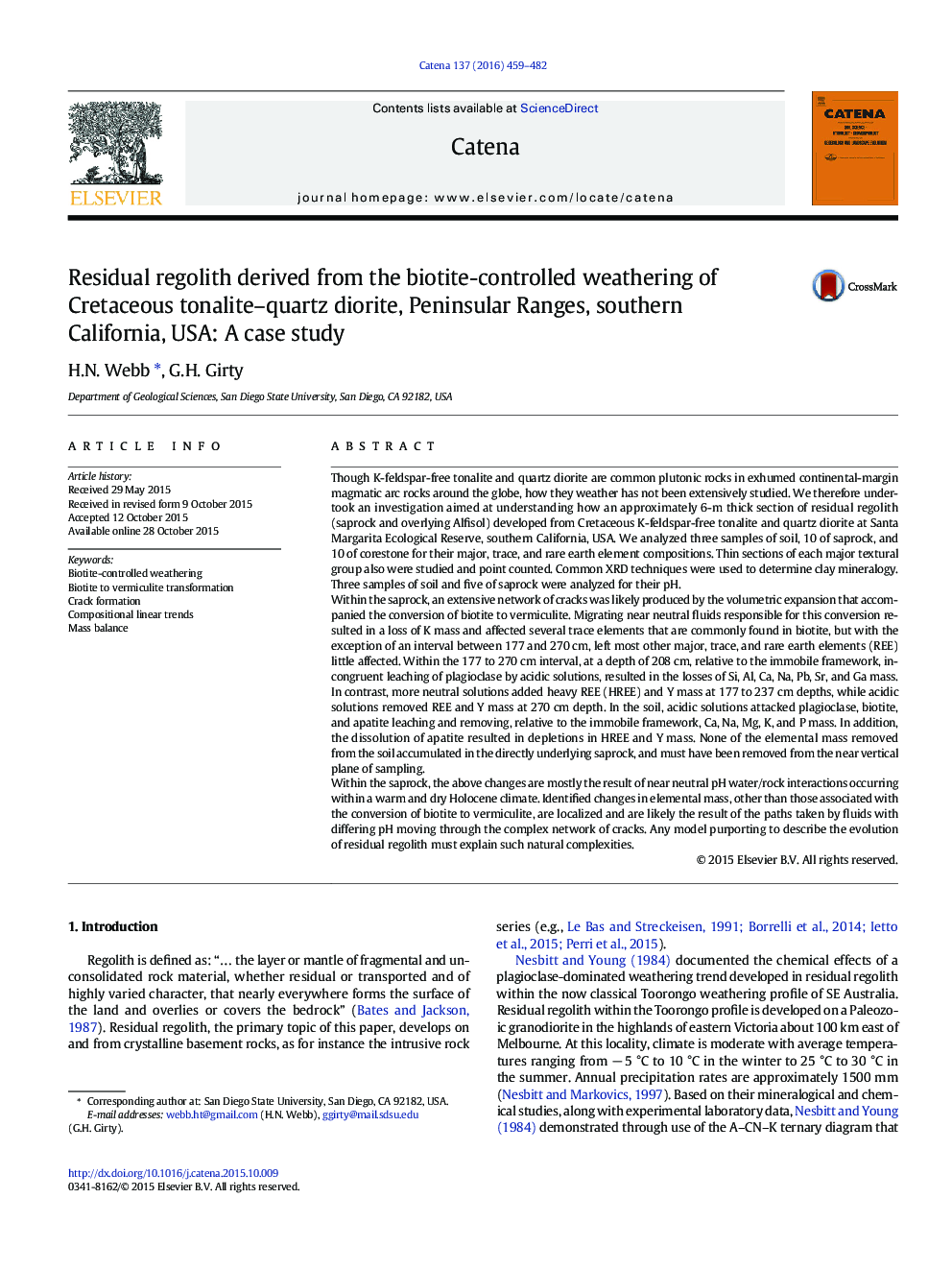| کد مقاله | کد نشریه | سال انتشار | مقاله انگلیسی | نسخه تمام متن |
|---|---|---|---|---|
| 6408002 | 1629215 | 2016 | 24 صفحه PDF | دانلود رایگان |

- 6-m-thick section of residual regolith developed on tonalite-quartz diorite was studied.
- Transformation of biotite to vermiculite under near neutral pH stressed host rock
- Complexly interconnected network of cracks served as conduits for fluids.
- Ubiquitous loss of K mass resulted in biotite-controlled compositional linear trend.
- Gains and losses of other elemental mass dependent upon crack interconnectivity
Though K-feldspar-free tonalite and quartz diorite are common plutonic rocks in exhumed continental-margin magmatic arc rocks around the globe, how they weather has not been extensively studied. We therefore undertook an investigation aimed at understanding how an approximately 6-m thick section of residual regolith (saprock and overlying Alfisol) developed from Cretaceous K-feldspar-free tonalite and quartz diorite at Santa Margarita Ecological Reserve, southern California, USA. We analyzed three samples of soil, 10 of saprock, and 10 of corestone for their major, trace, and rare earth element compositions. Thin sections of each major textural group also were studied and point counted. Common XRD techniques were used to determine clay mineralogy. Three samples of soil and five of saprock were analyzed for their pH.Within the saprock, an extensive network of cracks was likely produced by the volumetric expansion that accompanied the conversion of biotite to vermiculite. Migrating near neutral fluids responsible for this conversion resulted in a loss of K mass and affected several trace elements that are commonly found in biotite, but with the exception of an interval between 177 and 270Â cm, left most other major, trace, and rare earth elements (REE) little affected. Within the 177 to 270Â cm interval, at a depth of 208Â cm, relative to the immobile framework, incongruent leaching of plagioclase by acidic solutions, resulted in the losses of Si, Al, Ca, Na, Pb, Sr, and Ga mass. In contrast, more neutral solutions added heavy REE (HREE) and Y mass at 177 to 237Â cm depths, while acidic solutions removed REE and Y mass at 270Â cm depth. In the soil, acidic solutions attacked plagioclase, biotite, and apatite leaching and removing, relative to the immobile framework, Ca, Na, Mg, K, and P mass. In addition, the dissolution of apatite resulted in depletions in HREE and Y mass. None of the elemental mass removed from the soil accumulated in the directly underlying saprock, and must have been removed from the near vertical plane of sampling.Within the saprock, the above changes are mostly the result of near neutral pH water/rock interactions occurring within a warm and dry Holocene climate. Identified changes in elemental mass, other than those associated with the conversion of biotite to vermiculite, are localized and are likely the result of the paths taken by fluids with differing pH moving through the complex network of cracks. Any model purporting to describe the evolution of residual regolith must explain such natural complexities.
Journal: CATENA - Volume 137, February 2016, Pages 459-482